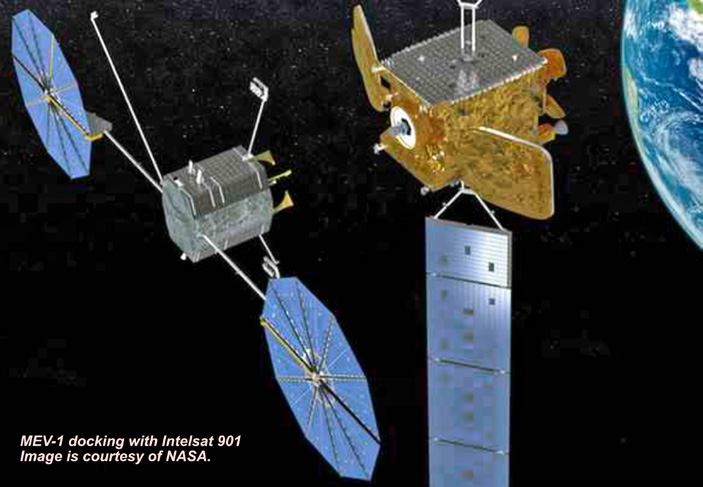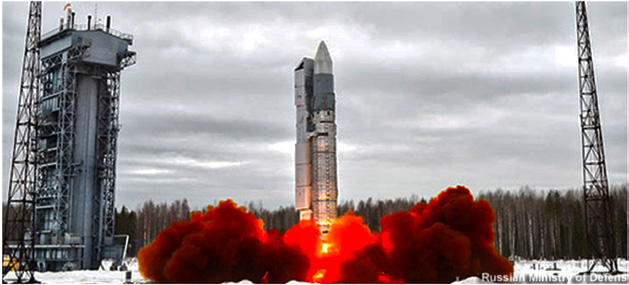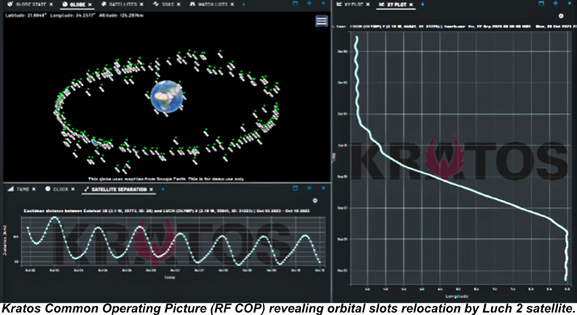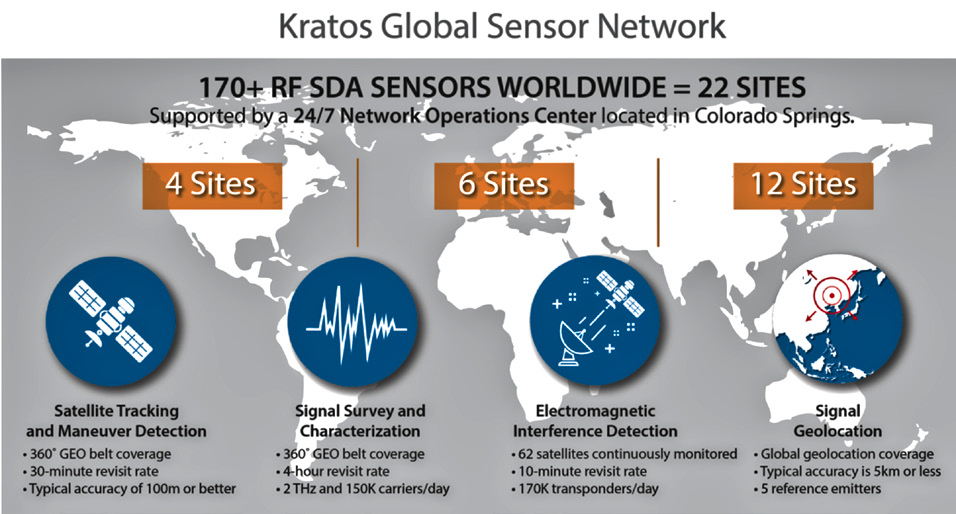As we look ahead to 2023, it’s worth pausing for a moment to reflect on the last 12 months and highlight the capabilities Kratos is using to support the warfighter through our global RF sensor network.

Kratos continues to improve on its commercial services enhancing Space Domain Awareness (SDA) by leveraging its global network to provide faster and more accurate RF data to fill critical gaps.
Current Real-World Applications — Ukraine
The ongoing dramatic changes in the technology and business surrounding space activities are having a significant impact on space remote sensing.
The Ukraine’s reliance on Starlink heightened global awareness regarding the impact of commercial space operations on conflicts on the ground. The Ukraine war has increased interest in the value of commercial services, especially cyber and remote sensing. Kratos capabilities are particularly well suited to address demand for RF SSA data.
This past year, Hugh White, the company’s Senior Director of Space Domain Awareness, spoke at the Military Space Situational Awareness Conference in London. Addressing Kratos’ advances in commercially available RF SDA capabilities that are delivering real-world mission impact, he focused on the capabilities of RF SDA in the Rendezvous and Proximity Operations (RPO) space arena.

RPOs are an example of a dual-use technology. On one end there are mission extension vehicles, such as the MEV-1, that is docked with Intelsat 901 to service and reposition it.
On the other end, there are ASAT weapons with kinetic kill capability. For missions across the RPO spectrum, accurate and commercially available RF SDA data is key for providing transparency to allied governments and commercial spacecraft operators. commercial spacecraft operators.
Participation Of RPOs In Conflict
Hugh discussed the use of RPOs in contested domains, specifically the Russian satellite known as Luch Olymp. While it is ostensibly part of Russia’s Luch communications relay satellite, Luch Olymp has demonstrated a different purpose by maneuvering into more than 25 different orbital slots and continually making close approaches on commercial and state-owned SATCOM vehicles. This has caused many to speculate Luch Olymp’s mission is a co-orbital SIGINT collector.

Kosmos-2504 lifts off from Plesetsk on March 31, 2015.
Image credit: russianspaceweb.com
Unexpected Neighbor in Space
In July of 2022, Kratos SDA analysts saw Luch execute a sudden 63,000-kilometer relocation drift. The satellite positioned itself next to Intelsat 37E, and on October 31st, 2022, came within 4 kilometers of the Intelsat spacecraft. Precise data like this is crucial for operators, such as Intelsat, so they can respond appropriately and fly their satellites safely when confronted with a non-cooperative intruder entering into their orbital slot.
Incidentally, this satellite repositioned itself almost six months before the Russian escalation near the Ukraine. The positioning of space assets is a key step in preparing for conflict. Warfighters know this and use the precise tracking of satellites, combined with an understanding of satellite missions, as valuable data warning of adversary intent.
Situational Awareness Is Not Just About Where SDA recognizes that the significance lies not only in the location of a satellite but also in its ongoing activities. Monitoring RF links can help in assessing intention. Since Space Electronic Warfare (EW) is one of the reversible effects that are especially important in a limited scale conflict such as Ukraine, Hugh said it is no surprise that we’ve seen a massive uptick in jamming in this theater.
Kratos has been using its global sensor network to detect and attribute satellite uplink jamming since 2010 and has observed more instances of deliberate interference in the last year than in the previous ten yeaers combined. Kratos SDA analysts processed mmore than 300 unique, RF interference events in 2023 alone. This is Space EW on an unprecedented scale.

Real-World Mission Impact
Warfighters are using commercial RF SDA to learn in real-time what MILSATCOM communication links are being targeted and degraded. Just as commercial overhead imagery is being used to inform decisions on the battlefield, commercial RF SDA geolocations are used to understand where adversary jammers are located and what mitigation options are available. Commercial RF SDA is being used to understand changes in Space EW techniques and tactics and inform responsible parties on how best to mitigate them.
In space, tracking enemy spacecraft helps anticipate their actions and safeguard our nation’s and our allies’ space assets. In communication, analyzing satellite bandwidth reveals adversary movements and communication methods, while space electronic warfare support enhances awareness of targeted and degraded communication. On Earth, commercial RF SDA helps locate intentional jammers to address electromagnetic interference.
SDA has become vital to mission success given the increase in commercial space activity and the escalating number of international actors influencing the dynamic theater.

Kratos Global RF Sensor Network
Kratos owns and operates the world’s most precise commercial ground network of RF sensors. Strategically positioned apertures around the globe enable precise and persistent RF sensing, providing insight for missions in defense, intelligence and commercial operations.
The global deployment of more than 170 sensors are capable of pinpointing satellite locations within 100 meters. The global network covers L-, S-, C-, X- and Ku-bands. Kratos’ state-of-the-art OpenSpace® Platform manages and controls the status of the global network.

Learn more about Kratos and the RF SDA commercial products and services available by going to www.kratosdefense.com/sda.


